Where Were You in the '80s?

By GINNY VAN ALYEA
In the 1980s when CGN was founded, throughout the decade not only did the number of galleries explode, but a groundbreaking, international art fair in Chicago was a game changer that would impact the city and region’s cultural life for years. Amidst all the energy and international attention, many of today’s art world leaders were just getting started.
When I arrived at CGN in 2002, 20 years after the magazine was founded, there were still many references to ‘in the ‘80s,’ around the office and in galleries. Considering that much of what exists in Chicago and the Midwest’s art community today was built on what was happening four decades ago, for this anniversary issue I wanted to share some first–hand recollections of what life and art in Chicago was like when CGN began. Those I spoke to remember it as a critical time of art creation, experimentation, collecting, excess, and some fun. It’s a privilege to be able to record these memories now for the decades to come.
*
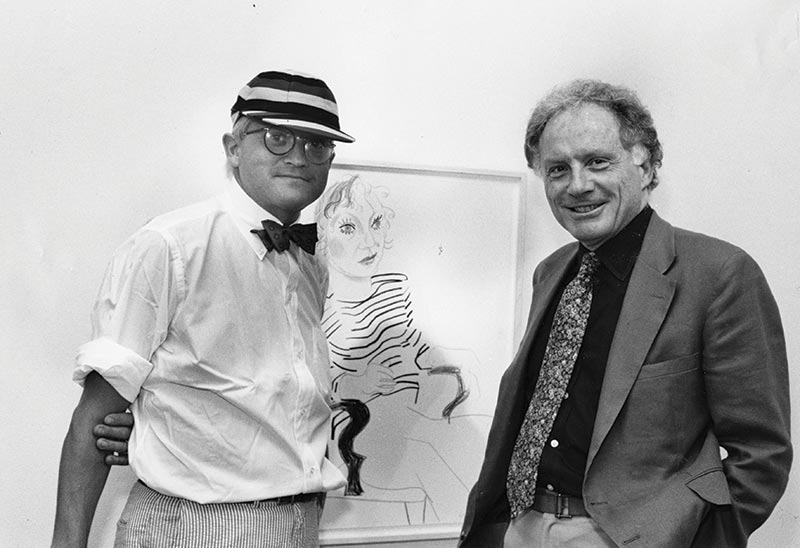
PAUL GRAY – GRAY
“Chicago has been a fertile environment in which to grow a gallery. When my father Richard first opened the gallery in 1963, the community of serious, active collectors of Contemporary and Modern art already included such luminaries as Shapiro, Horwich, Bergman and Alsdorf who, together, only a few years later helped found the MCA. Among the already established contemporary galleries were Goldowsky, Frumkin, Feigen and Fairweather-Hardin. The Arts Club had, since early in the century, been presenting artists like Brancusi, Léger and Dubuffet to American audiences for the first time. By 1980, when Art Chicago was first held, the combination of artists, galleries, museums and collectors attracted nearly 100 exhibitors from around the world and quickly doubled in size along with the gallery scene.
I joined [Richard Gray Gallery] in 1982 as a new generation of collectors including Manilow, Edlis and Elliot were building now-legendary collections. That decade saw the art world begin to globalize as events like Art Basel and Art Chicago inspired collectors and dealers to broaden their horizons. American and European collectors still dominated the market, but Japanese buying and several dozen new contemporary museums emerged around the world as powerful influences on the market.
It matters where a gallery is located, but in truth, no ambitious gallery lives by the local market and this has been true forever. Look at the Art Institute’s world famous Impressionist collection–mostly acquired by Chicago collectors from European artists and dealers. Some of the greatest collectors make their homes and fortunes in places where there are few galleries and a compelling program draws its followers from wherever they are. I believe that we have never seen more than 1/3 of our annual business done with local collectors and in most years it is closer to 20%. This isn’t a criticism of Chicago. The same holds true for galleries in New York, London and elsewhere. Part of the excitement of collecting is discovery and learning, and this drives us out into the world in the search.
The most profound changes I’ve experienced in Chicago and the art world at large during the past 40 years have come recently–primarily in the past decade. In 1980–in spite of a diverse population, the presence of one of the great art schools in the country and the many artists living and working here–you might have been able to name two Chicago artists of color, and possibly no women, who’d achieved something of a bold-face name reputation. Economic viability as an artist was totally out of reach for them. Our gallery was just one of the significant art world players whose overwhelmingly white male program had for decades helped make this true. Today almost every one of the many famous artists from Chicago is Black and most are financially thriving. The Board of the Art Institute is chaired by a Black woman, and the Guggenheim’s Deputy Director and Chief Curator Naomi Beckwith is another whose career was shaped, in large part, at Chicago’s MCA. The contributions being made by groundbreaking artists– such as Amanda Williams and Torkwase Dyson, Kerry James Marshall and Theaster Gates, among many, many others–will change forever how we understand art, ourselves and our world. This provides a sense of adventure second to none we’ve experienced, or perhaps even imagined.”
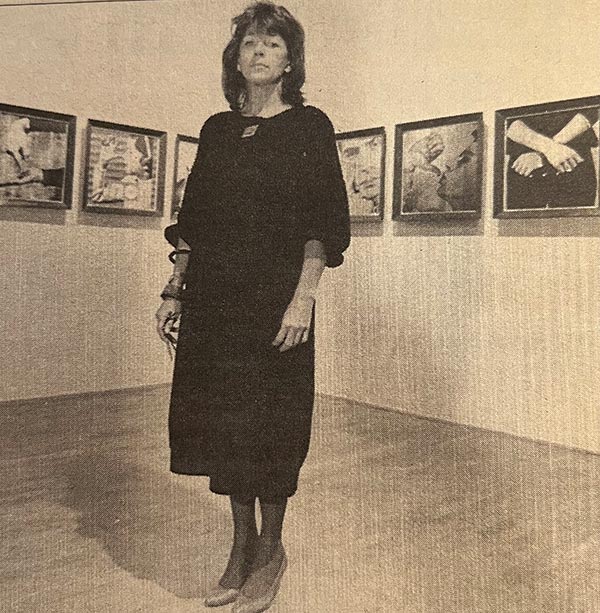
RHONA HOFFMAN – RHONA HOFFMAN GALLERY
“The Chicago art world in the 1980s reflected the era. It was exciting, optimistic, and also successful in terms of business.
There were wonderfully intelligent collectors who thought about many things and who were particularly interested in the art of their time. They read about art, bought the art, talked about the art with each other. Furthermore they supported the Chicago galleries, and most of the museums in the city with their money and with their presence.”
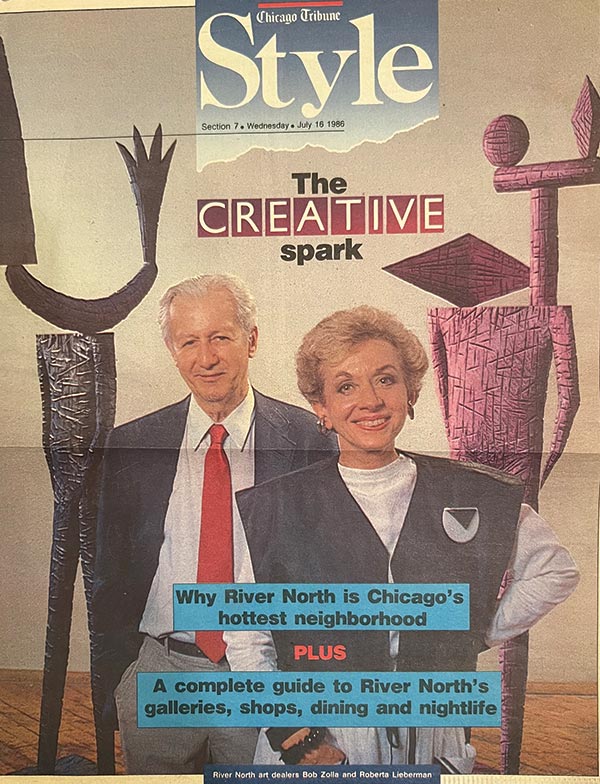
WILLIAM LIEBERMAN – ZOLLA/LIEBERMAN GALLERY
In the ‘80s I started working at the gallery part-time. Back then there were hundreds of people–collectors, artists, critics–who would show up on weekends. My mother, Roberta Lieberman, was doing these fabulous shows in that space with artists outside of Chicago. She would go to New York to get these major shows and fill the space with really interesting work. Nobody else in Chicago had this kind of space yet: 10,000 square feet, tall ceilings, and freight elevators. We could do anything. You didn’t have to go to New York, you could come to River North.
There were a lot of interesting people around the neighborhood at that time, everyone from Bill van Straaten doing fabulous print shows, to critics like Dennis Adrian and Franz Schulze. My mother would send [her partner] Bob Zolla to sit in front of the MCA to wait and get curators to come over to the gallery. They would! Then my mother and Bob would make these elaborate lunches for them.
Phyllis Kind’s gallery was really amazing. She had the vision with the Chicago Imagists. Man, people were buying so much work by Roger Brown, Jim Nutt and Ed Paschke.
I learned a lot, from everyone from Donald Young to Mary Jane Jacobs. I was still making pottery then at Northeastern Illinois University and also teaching it at Loop College, which turned into Harold Washington. This is just what I can remember. There are so many bits and pieces. A lot was happening at a time when I was young and wanted to take it all in.
CARL HAMMER – CARL HAMMER GALLERY
Chicago Gallery News and I share a similar history regarding the number of years we’ve both existed. My gallery opened in 1981 and was located in the 620 N. Michigan Ave. gallery building, which housed a lot of the big names in Chicago at the time (Richard Gray Gallery, H&H Modern, Phyllis Kind & others). Most of the building consisted of established galleries, so it was a great place for me to start out, despite my size and experience.
The gallery’s name, when opened, was Hammer and Hammer/ American Folk Art. It was there that I bumped into the amazing Lee Godie, who saw the area as a prime place to sell her work. Though it was a small space, the location provided an exhilarating view of the Chicago fine arts scene, let alone being a short distance from the Michigan Ave. bridge over the Chicago River. I was still teaching high school, and each day I would beat it down to the 620 location from Evanston after I was finished teaching for the day. The activity of Michigan Ave. made the 620 building always buzz with traffic and interaction between the galleries. I was quite disappointed when (later) the bigger, better-known galleries at that time started relocating to a strange, out-of-the-way location called River North before I moved there myself. It was a very memorable beginning to my gallery’s history.
FRANK PALUCH – PERIMETER GALLERY
Our gallery opened around 1982. We were in the building that eventually burned in1989 [in the River North Fire.] It really had been a scene.
I think now, the world is just different. People see art differently and they want everything to be like their Amazon experience. It’s got to be a question for galleries of how do they give some of that experience to clients? I guess some of the answer continues to be the dominance of the art fair.
I remember when Mark Lyman worked with John Wilson at Art EXPO. Mark was a potter, and he knew he wanted to start an art fair that highlighted works that otherwise weren’t widely shown in that setting: fine contemporary craft. He called it New Art Forms, before it eventually became SOFA. There wasn’t anything else like it, and it just added to the strength of the Chicago art fair scene.
We closed the gallery a few years ago, but at Perimeter I didn’t think of the work we showed as craft necessarily, it was all art to me. I can’t tell you how many calls I get now from people saying David Zwirner and Larry Gagosian are showing ceramics now. Even Theaster Gates, he’s conceptual but he’s a sculptor. All that art is getting the attention it deserves.”
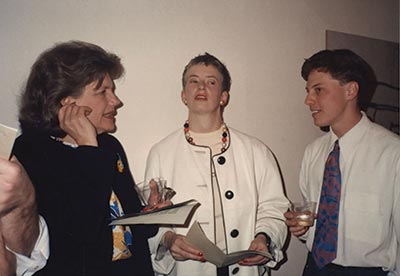
JASON PICKLEMAN – JNL DESIGN
Randolph Street Gallery was the center of my ‘80s art life. I saw every exhibition, and was in the audience of many—often interminable—performances. Because there was no internet (and thankfully no email!) we relied on word of mouth, hand-posted flyers, and just showing up to find out what was going on. Not far away in River North, I didn’t realize that seeing Jeff Koons and Richard Prince at Feature, or Barbara Kruger at Rhona Hoffman Gallery was going to be a foundational art experience. But they were. And how I wish I could go back in time—and buy work from all of them!
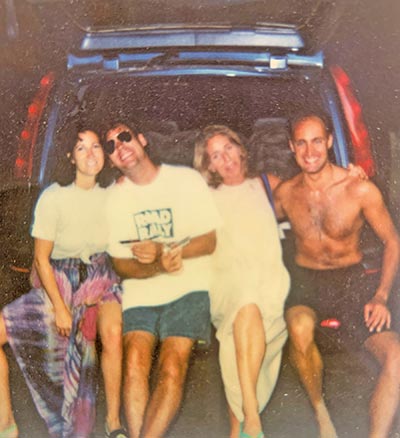
SALLY SCHWARTZ – FOUNDER, RANDOLPH STREET MARKET
“What I probably remember most during the 80s in Chicago was having some seriously crazy times with friends who worked for John Wilson [founder of Art Expo], from Tom Blackman to Tom McCormick, Tony Karman, Terry Karpowicz, and the parties. There were great parties, and then after parties at blues clubs around Chicago. Jason Pickleman’s dance moves were center stage! It was a time of conspicuous consumption, lavish food, Cristal Champagne, and big shoulder pads. People were buying art like crazy. I spent most of my time at Smart Bar, Metro, Exit, Limelight, and seeing great live jazz on Lincoln Park West.
When I think of what’s different now, the city art scene isn’t just in River North, it expanded to Pilsen, Bridgeport, Hyde Park, West Loop and throughout the suburbs. It seems like every town or neighborhood has an art center and art feels bigger than back then.”
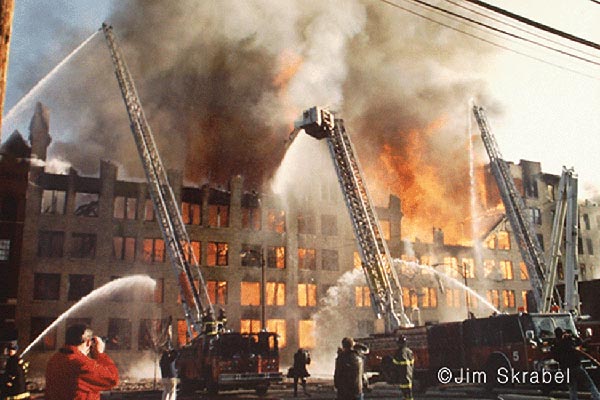
TONY KARMAN – FOUNDER, EXPO CHICAGO
The Chicago International Art Exposition launched in 1980 and brought the art world to Chicago at the pre-renovated Navy Pier. The Rotunda, now called the AON Ballroom, hosted the leading galleries with others stretching throughout the east end and into the two pier sections that were later removed. At the time, I was working with the Lakeside Group, the producers of the exposition. I have many memories of rushing to cover artwork with plastic when birds and storms passed through the many holes of the old sheds. Talk about old Navy Pier to a dealer that did those fairs, and they wax poetic about that time. Ask me, and I remember the hectic scrambling and frustration.
The Museum of Contemporary Art was on Ontario, with the popular Inkwell bar nearby, the Arts Club of Chicago was further west across Michigan Ave., and Lew and Susan Manilow’s loft above the legendary Randolph Street Gallery was (for this not-well-travelled young man) my vision of what SoHo in New York must be. River North was the epicenter of the gallery district, and the streets were consistently packed with crowds during Friday night openings. Galleries were located throughout the neighborhood, with a concentration located in a one-square block historic Louis Sullivan designed warehouse that was across the street from the Green Door Tavern. Sadly, a fire broke out in April of 1989, destroying the building, the nine galleries that were located inside and irreplaceable artwork that was estimated at $50 million. That moment literally, and figuratively, gutted our “Chelsea” moment but sparked a new wave of galleries pioneering the West Loop.
Upon reflection as a young 20-something living in a very small studio on Division and Astor, the city seemed much smaller and the nightclub circuit served as an important way to connect to friends. Clubs like Limelight and OutTakes flourished in River North; Shelter and China Club were located in the “outlying” working district called Fulton Market, and Northside clubs like Metro, Smart Bar, Neo’s were also always in the mix. Outside of the club circuit, I was always in River North and Lakeview, and I loved Pilsen and Hyde Park to get away.
Now, I remember life as oddly wonderful pre-internet, social media and cellphones. You had to rely on serendipity, in-person meetings, your pocket calendar, phone calls and answering machine messages to connect. Handwriting was still important, and everyday computers were just starting to be used. Most important, we were simply out more exploring museums, galleries, restaurants, film and music throughout the city. It was not better or worse, just different. Despite all that has changed and shifted over the last 40 years, Chicago remains consistent, rich with diversity and creativity while offering much to those that want to explore.
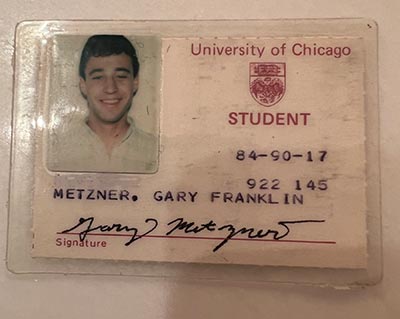
GARY F. METZNER – SOTHEBY'S
Senior Vice President: Head of Office
In 1986-88, “A lot was going on. I was staying busy getting my Masters in art history at the University of Chicago, while also working part time at Hokin Kaufman Gallery, which was where Rosenthal Fine Art is now on Superior street in River North.”
TONY FITZPATRICK – ARTIST
I started my career in the East Village in NYC. The 80’s were the decade that first afforded me a chance to make a living at what I did, but I don’t have a lot of nostalgia for it. The 80’s were cynical, avaricious and careerist to the point of being revolting. In New York I didn’t understand the “Order“ of things. Chicago was not much different, though not nearly as high-stakes.
I was a rube in this setting–happy to be able to support myself, but I bristled at the gate-keepers, “critics”, taste-makers, and worst of all dealers; who expected us to come “hat-in hand”, demonstrating an obsequious brand of fealty. I wasn’t playing. I opened my own galleries and concentrated on artists whom I thought were undervalued.
The 80’s did us no favors. Good riddance to the Limelight, Parachute pants, and MTV haircuts. That said, Chicago is the place I love the most in the world. It is the story that keeps beginning.






